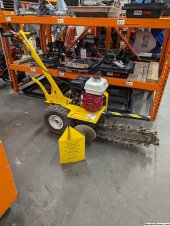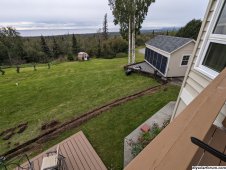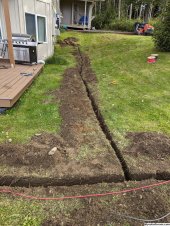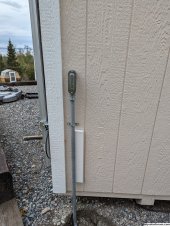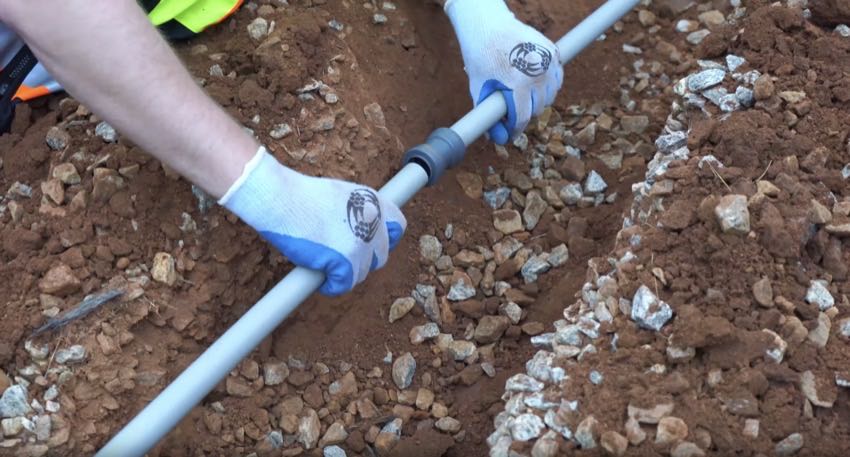Depends on what kind of soil you have, how deep you want to have the finished trench to be. Other considerations are obstructions, how close you are to buildings (and other things you don't want to destroy), and how much actual work you want to do.
I have done a fair amount of this in our yard over the past 5 years. I have a tractor mounted backhoe with a 9" bucket. It is great...until you hit slabs of limestone and pull them out of the ground and make a 3to4' hole along the way. Then you also have mountains of spoils to deal with...so, you need plenty of space.
Chain driven trenchers, like the one above, are cool if you have pure dirt...otherwise you are in for a heck of a workout. You can get one that mounts on the front of a skid steer...much easier on the body, but you need the space to make sure you don't put a hole in the side of your house or any other item that you forget is behind you.
A rock saw, looks like something out of Mad Max, is the tool of choice around here for making trenches. We have limestone about 8" below the surface. Sometimes you get lucky and don't run into it for 2' or so...most of the time not. It will cut through anything...quickly. It makes nice, clean, deep trenches ready for use right away. The downside is, well, anything it touches will be destroyed.
Something else to consider is how deep and wide the trench is. If it is deeper than a foot or so, you may want to make sure it is wide enough to get your foot down into (width of your boot +). Working below your feet gets old...so, does trying to get your boot into a trench that is not wide enough to fit your boot into after you get tired of working below your feet.
To me, renting the right equipment or paying someone with the right equipment, is a good place to spend some of your budget if the trench is deep and long enough.




